 EN
EN
 PT
PT
Reading and an introduction to writing
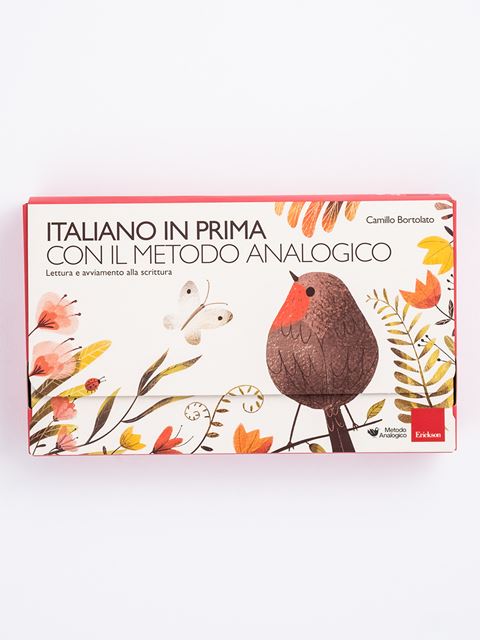
Product: Book
Pages: 8 desk strips + strip holder + book " Pitti's seasons" + writing exercise book + fiber pen + guide for teachers
ISBN: 9788859011705
Publication date: 01/09/2016
Suitable for: Nursery 2nd Level (ages 4-5), Primary 1st level (ages 6-7)
REQUEST A SAMPLE OR MORE INFORMATION
An innovative proposal for applying the analogical method to teaching/learning Italian in year one of primary school.
In order to enable children to learn to read right from the beginning the entire alphabet is presented, together with digraphs and trigraphs, which from word groups turn into icons, so that they can be more easily memorised, identified and decoded. Learning to write however takes longer and occurs following precise indications.
Year One Italian with the analogical method comprises:
DESK STRIPS: a packet of strips to be used as reference tools and kept in front of children on their desks:

There is an easier and simpler way of learning how to read and write
«This proposal applies the analogical method to learning reading and writing and comes from the very need to ease the burden of school for children, parents and teachers. The same essential principles applied in learning mathematics and the use of valid, meaningful tools for all children are extended to learning Italian».
Camillo Bortolato
«Year One Italian with the Analogical Method» is a box which contains all the necessary tools for learning reading and writing in primary year one: a strip holder to hold the strips, an erasable felt pen for writing on transparent film, 8 strips for introductory reading and writing exercises, the story book “Pitti’s Seasons”, the little exercise book of fonts for starting to write and lastly a guide for teachers and parents on how to use the kit.
ALL THE TOOLS CONTAINED IN THE BOX:
THE STORY BOOK «PITTI’S SEASONS»
Pitti’s Seasons replaces the traditional reader, which usually contains fragmented texts and therefore interrupted emotions. Offering children a single story gives them an incentive to read. Thrilling them. The book, which narrates the adventures of a robin whom we have already met in Pitti's Little Story, is a story for learning how to read without any preliminary exercises, as you go along, just as children like best. If you are having trouble just use the Alphabet strip or the Reading keyboard, which are the essential reference tools for reading.
Another aspect which characterises this book is the sub-division of words into «reading units»: a sort of «subitizing» applied to reading, where the words are divided into groups of letters, as is done with dots in mental calculation. In this way, the child's eyes will not roam around long words in order to understand what to make of them. These units do not always correspond to the standard division into syllables because spelling accuracy is not the most important thing here.
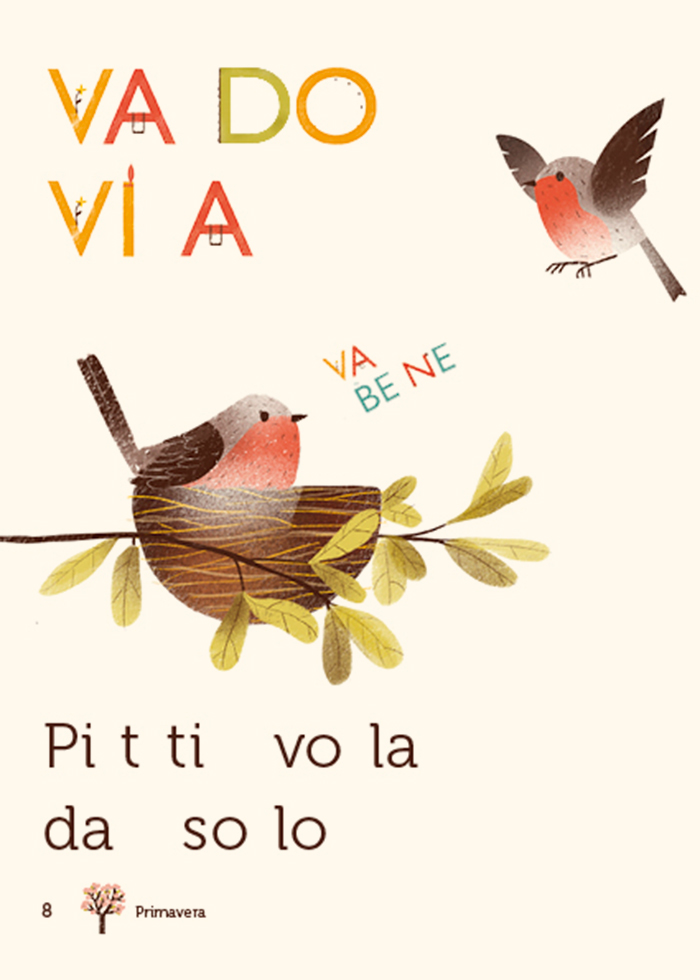
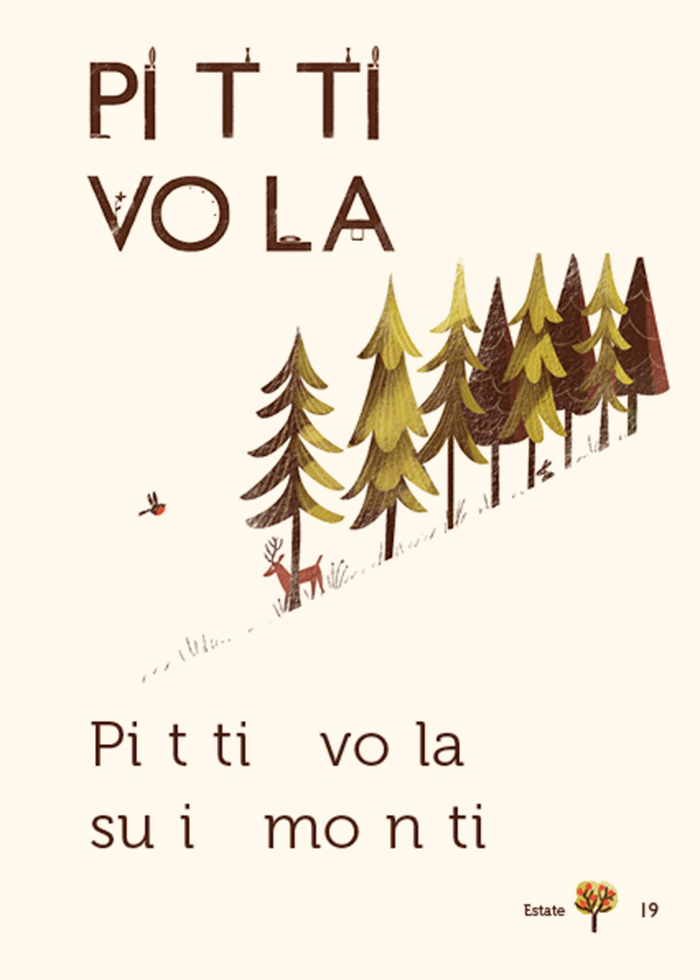
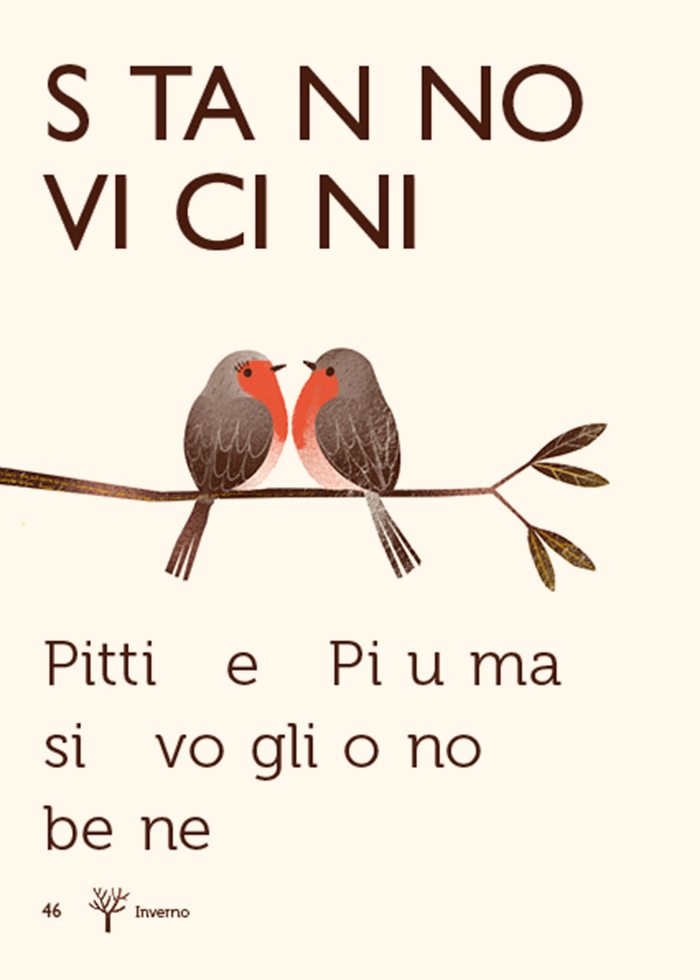
Chapter by chapter, this sub-division of words gradually disappears. The grammatical rules of syllables are generally followed, except in the event of words which are long or difficult to pronounce (for example, sce/n/do/no, mo/stra/r/lo). And in the last chapter, the words are given whole, with no subdivision, because reading has been learnt.
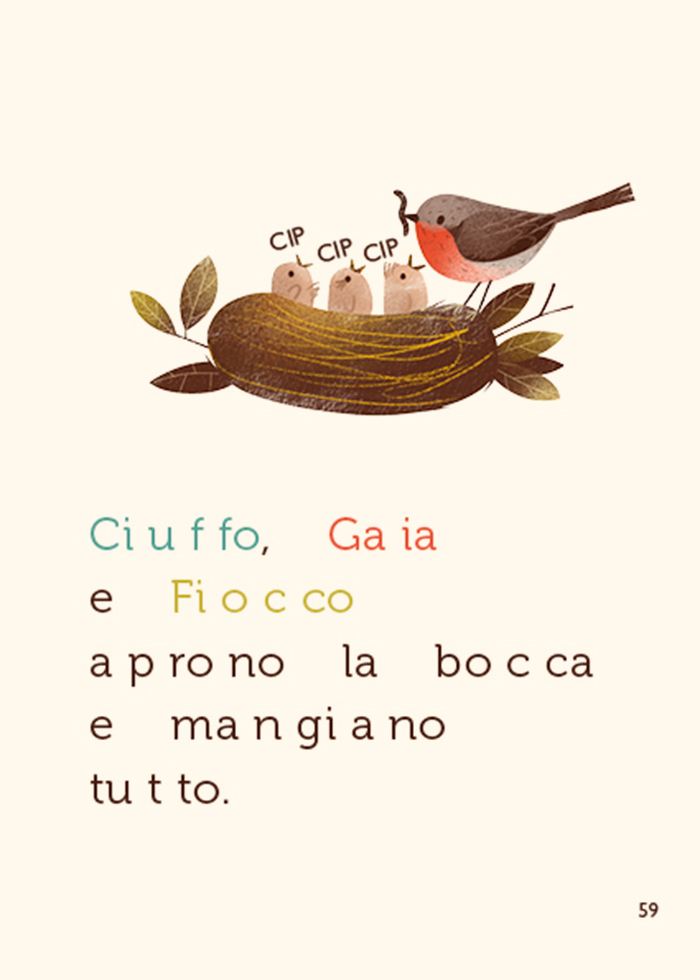
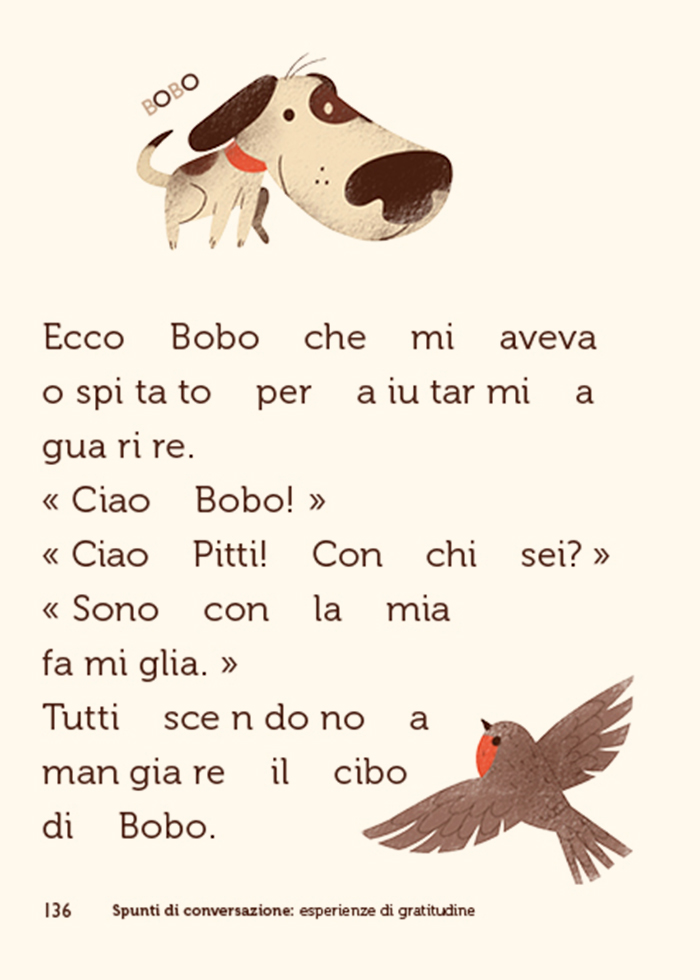

THE LITTLE EXERCISE BOOK OF FONTS
This is a little guide to learning how to write, free from any worries about learning to read. It is not intended as a replacement for the child's individual exercise book, instead it offers a daily programme to follow for the first few months of school.
By concentrating the teaching of reading into a shorter time frame, teachers can dedicate themselves more systematically to writing activities. This little exercise book acts as a guide and should be explored and enriched day by day. The little exercise book performs various functions:

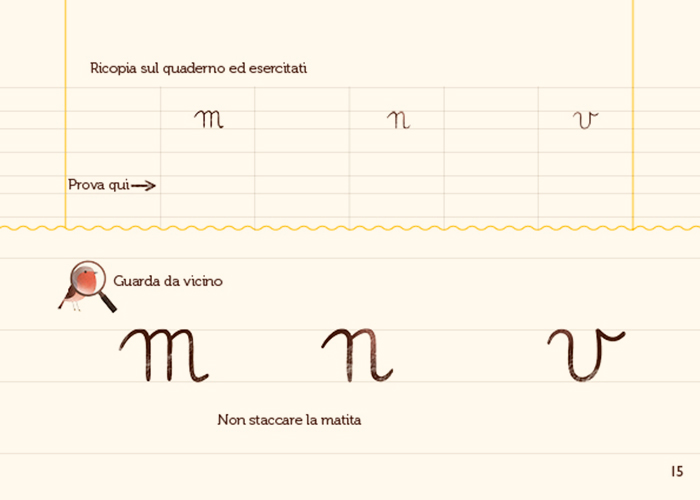
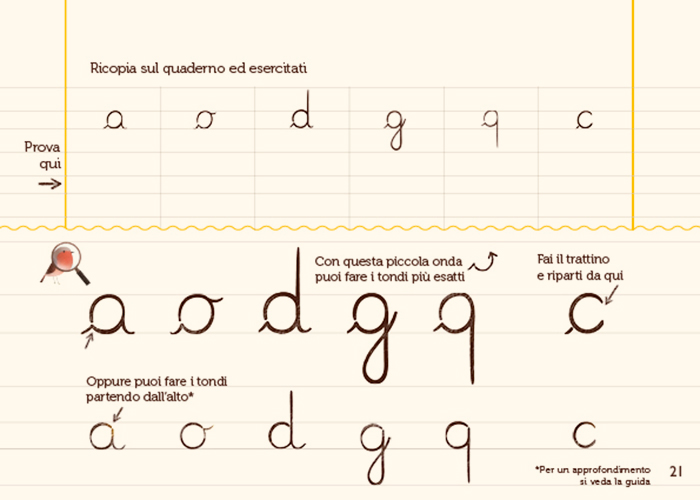
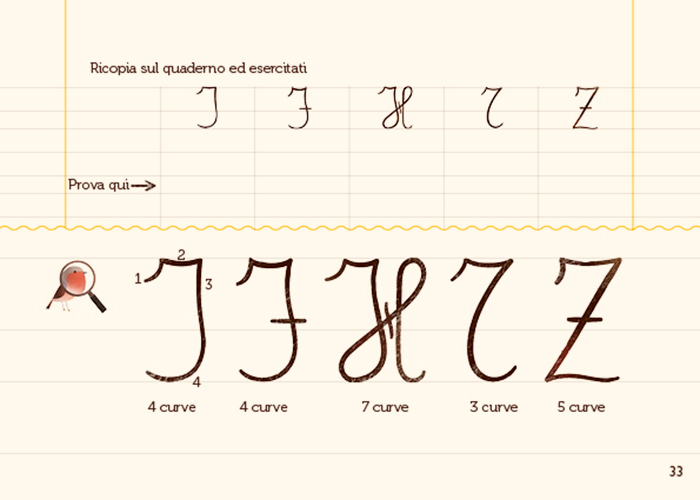
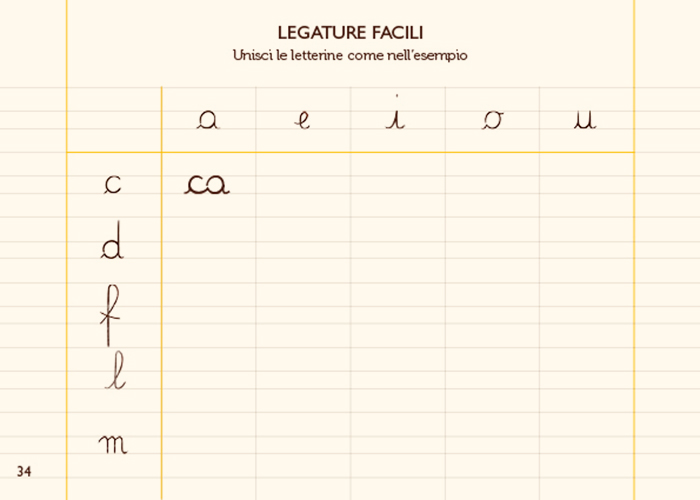
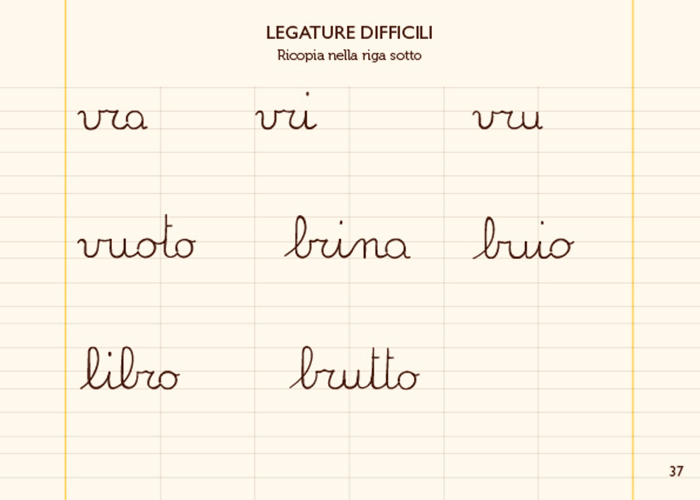
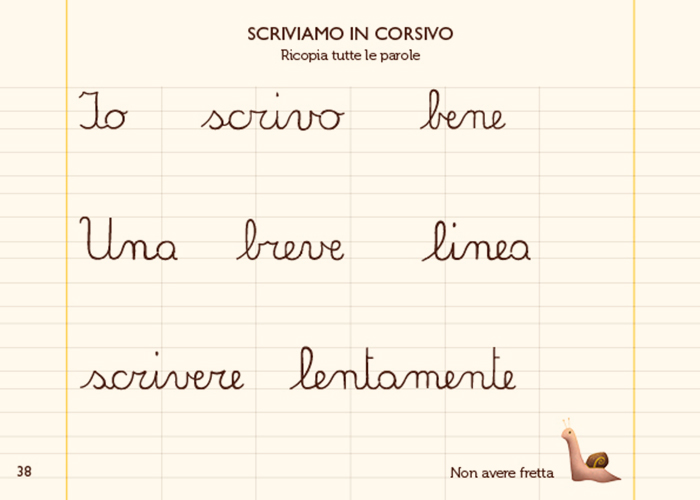
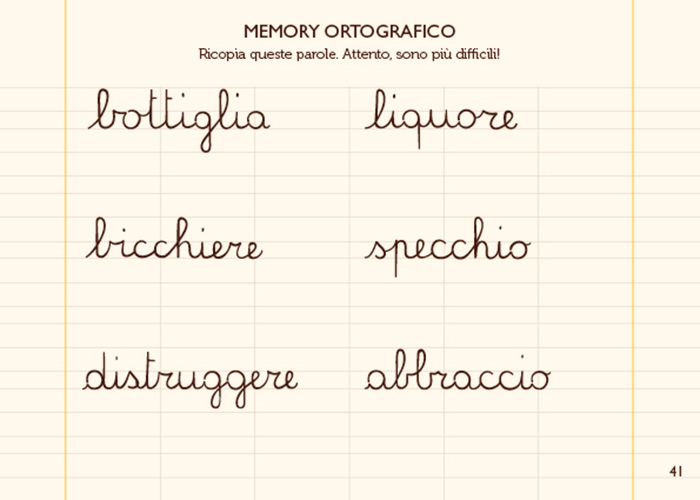
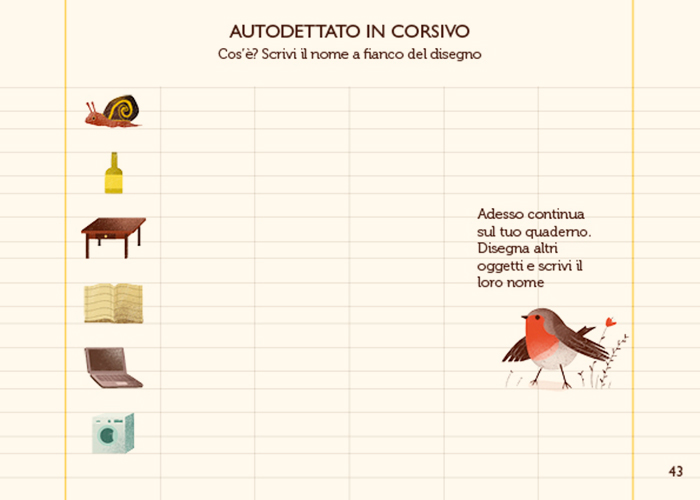
8 DESK STRIPS
Here is how to use the 8 strips
Strip 1: Take-apart strip
It's the most entertaining strip. It includes: a «name holder», where you write your name and surname; space for personal details; the main characters from Pitti's story; the letter cover card as an option for focusing the child's attention line by line.


Strip 2: Alphabet strip
It includes:
• pictures for letter association: these are useful for emotional reinforcement and may also provide inspiration for drawing activities;
• foreign letters inserted into the standard alphabet, which are recognisable form their position at the top;
• special sounds, found on the B side, for more targeted study. They are single sounds which are written with a group of letters.


Strip 3: Reading keyboard
It shows the entire alphabet printed in upper case (Strip 3A) and lower case (Strip 3B) and has the following characteristics:
• the letters in upper case print have emotional hooks («hook letters»);
• the letters are divided into groups so they can be located at a glance;
• digraphs and trigraphs are also transformed into special icons, so that they can be studied all together. It also includes:
• a series of images (in the lower margin) whose names are «typed» with your finger on the keyboard.
• syllables under each (upper case) letter in order to type the names more quickly and start reading syllables.


Strip 4: First words to read
Side 4A shows a sequence of 16 words printed in upper case with hook letters for an introduction to reading.
Side 4B shows 16 words printed in lower case to be read whilst consulting the reading keyboard (Strip 3B) if necessary.


Strip 5: Printing in upper and lower case
It shows letters printed in upper case (Strip 5A) and lower case (Strip 5B), to be traced with the erasable felt pen. The starting points for each letter are given. There is space below in order to try writing without tracing. Lower case printing is offered as an extra, seeing as it is not used for handwriting in exercise books.


Strip 6: Joined-up writing in upper and lower case
It shows handwritten letters grouped into five families with graphic similarities. The process is later repeated in the little exercise book of fonts. In this phase, using the erasable felt pen helps with this initial experimentation.


Strip 7: Joining-up exercises
This strip allows children to try out the complex process of joining up letters using the erasable felt pen without worrying about making a mistake. It is a preview, to be carried out under the guidance of the teacher, of the work to be done in the child's exercise book.


Strip 8: Spelling memory
It shows words which often cause spelling difficulties. They are written in joined-up writing as this is when mistakes occur. The strip is a handy, ready to use tool which can be expanded with other words chosen by the child or teacher.


Left-handed strips
For children who encounter objective difficulties moving the felt pen towards the right without smudging what they have already written, a solution - to be decided by the teacher or parent - could be to rewrite some of the strips vertically and to position the strip holder vertically too.
Discover the other books and tools of the Bortolato Analogical Method »